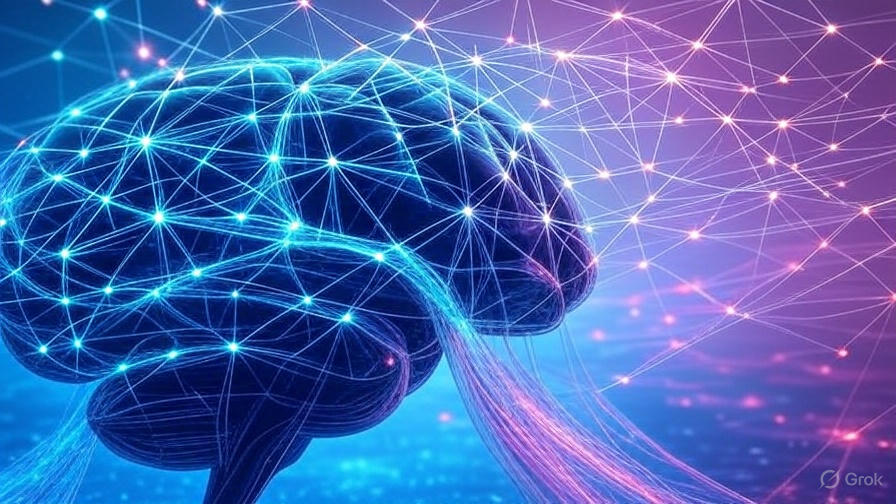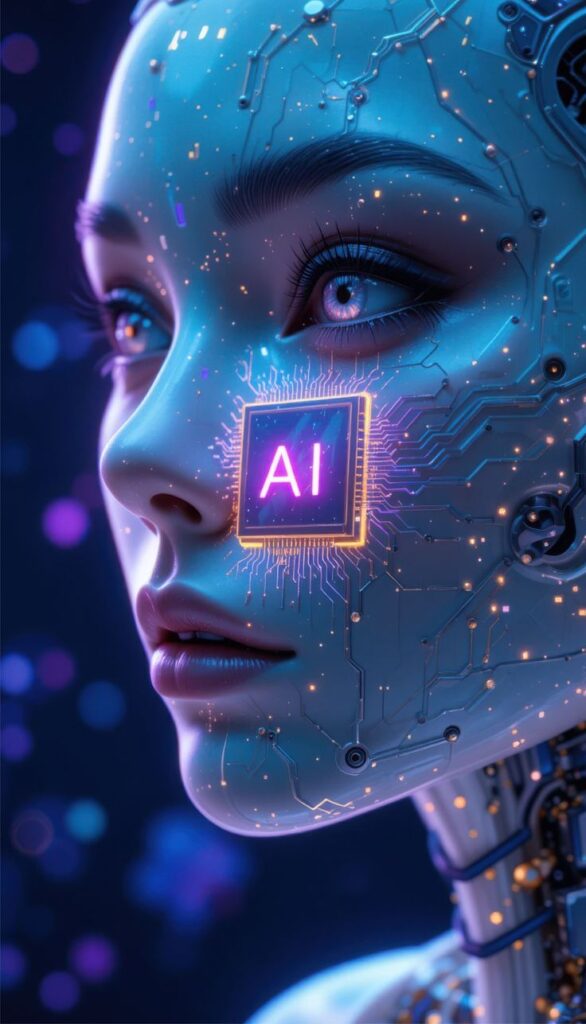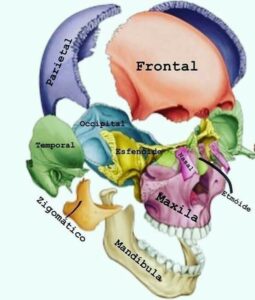The question “Who is the father of AI?” doesn’t have a simple answer. Artificial Intelligence, as we know it today, is the result of decades of groundbreaking work by multiple visionaries, mathematicians, computer scientists, and philosophers. While several individuals have been credited with this prestigious title, the development of AI represents a collaborative effort spanning generations of brilliant minds.
The Prime Contender: Alan Turing
When discussing the father of AI, Alan Turing emerges as the most frequently cited candidate. The British mathematician, computer scientist, and cryptanalyst laid the foundational concepts that would eventually evolve into modern artificial intelligence. His contributions to the field are so significant that they continue to influence AI development today.
Turing’s Revolutionary Contributions
Turing’s most famous contribution to AI is the Turing Test, proposed in his 1950 paper “Computing Machinery and Intelligence.” This test became the gold standard for measuring machine intelligence, asking whether a machine could engage in conversations indistinguishable from those of a human being. The test remains relevant today as we evaluate modern AI systems like ChatGPT and other conversational AI tools.
According to Wikipedia, Turing’s work during World War II on breaking the Enigma code demonstrated the practical applications of computational thinking. His theoretical work on computation, particularly the concept of the “Turing Machine,” provided the mathematical foundation for all modern computers and, by extension, artificial intelligence systems.
Turing’s vision extended far beyond mere computation. He believed that machines could one day think, learn, and even exhibit creativity. This prescient view of machine intelligence makes him a strong candidate for the title of AI’s father. His famous quote, “I believe that at the end of the century the use of words and general educated opinion will have altered so much that one will be able to speak of machines thinking without expecting to be contradicted,” proved remarkably accurate.
The Turing Legacy in Modern AI

Today’s AI applications, from sophisticated AI keynote speakers who can engage audiences with human-like presentations, to advanced text processing tools, all trace their conceptual origins back to Turing’s groundbreaking ideas. Even specialized tools like bible verse generators that can understand context and provide relevant scriptural content rely on the computational principles Turing established.
John McCarthy: The Man Who Named AI
While Turing provided the conceptual foundation, John McCarthy earned his place in AI history by actually coining the term “Artificial Intelligence” and organizing the famous 1956 Dartmouth Conference, which many consider the birth of AI as a formal academic discipline.
McCarthy’s Pivotal Role
McCarthy, an American computer scientist, organized the Dartmouth Summer Research Project on Artificial Intelligence in 1956. This conference brought together leading researchers to explore the possibility of creating machines that could simulate human intelligence. The event is widely regarded as the founding moment of AI as a distinct field of study.
According to Forbes, McCarthy’s contributions extended beyond nomenclature. He developed LISP, one of the oldest programming languages still in use today, specifically designed for AI research. LISP became the preferred language for AI development for decades and influenced the creation of many AI systems.
McCarthy also introduced the concept of “time-sharing” in computing, which allowed multiple users to access a computer simultaneously. This innovation was crucial for the development of AI systems that required substantial computational resources. His work on mathematical logic and formal reasoning laid the groundwork for expert systems and logical AI approaches.
McCarthy’s Vision of AI
McCarthy envisioned AI as a broad field encompassing machine learning, natural language processing, robotics, and computer vision. His holistic approach to AI research established many of the subdisciplines we recognize today. From modern trade analysis tools that use AI to predict market trends, to creative applications like fancy text generators that employ AI for stylistic text transformation, McCarthy’s broad vision of AI capabilities continues to manifest in contemporary applications.
Marvin Minsky: The Cognitive Pioneer
Marvin Minsky, often called the father of AI alongside McCarthy, made fundamental contributions to our understanding of machine intelligence and cognitive science. His work bridged the gap between theoretical computer science and practical AI applications.
Minsky’s Groundbreaking Work
Minsky co-founded the MIT Artificial Intelligence Laboratory and wrote several influential books, including “Perceptrons” (with Seymour Papert) and “The Society of Mind.” His research focused on how intelligence might emerge from the interaction of simple, unintelligent parts – a concept that prefigured modern neural networks and distributed AI systems.
His work on frames and knowledge representation influenced how AI systems organize and process information. Minsky’s theories about how the mind works provided crucial insights for developing AI systems that could reason, learn, and adapt. According to research from MIT, Minsky’s contributions to robotics, including early work on mechanical hands and computer vision, laid the groundwork for today’s advanced robotic systems.
Minsky’s Lasting Impact
Minsky’s interdisciplinary approach, combining psychology, philosophy, and computer science, established AI as a field that draws from multiple domains. His emphasis on understanding intelligence as a complex, multi-layered phenomenon continues to influence modern AI research and development.
Herbert Simon: The Decision-Making Innovator
Herbert Simon, a Nobel Prize-winning economist and cognitive psychologist, made significant contributions to AI through his work on human decision-making and problem-solving. His research provided crucial insights into how machines might replicate human reasoning processes.

Simon’s AI Contributions
Simon co-developed the Logic Theorist, one of the first AI programs capable of proving mathematical theorems. This program, created with Allen Newell and J.C. Shaw, demonstrated that machines could perform tasks requiring logical reasoning and symbol manipulation.
His work on bounded rationality – the idea that decision-making is limited by available information, cognitive limitations, and time constraints – influenced the development of AI systems designed to make practical decisions under uncertainty. This concept is particularly relevant in today’s AI applications, from automated trading systems to recommendation algorithms.
Arthur Samuel: The Machine Learning Pioneer
Arthur Samuel coined the term “machine learning” and developed one of the first programs that could learn from experience. His checkers-playing program, developed in the 1950s, could improve its performance through practice, demonstrating the fundamental principle of machine learning.
Samuel’s Revolutionary Approach
Samuel’s work showed that machines could acquire knowledge and skills without being explicitly programmed for every situation. His checkers program eventually became skilled enough to beat its creator, providing a powerful demonstration of machine learning capabilities.
His definition of machine learning as “the field of study that gives computers the ability to learn without being explicitly programmed” remains the standard definition used today. This concept underlies virtually all modern AI applications, from the sophisticated algorithms powering professional AI speaker selection to specialized tools that adapt to user preferences.
The Collective Fathers of AI
Rather than attributing AI’s paternity to a single individual, it’s more accurate to recognize AI as having multiple “fathers,” each contributing essential elements:
The Mathematical Foundation
- Alan Turing provided the theoretical foundation with his work on computation and machine intelligence
- Claude Shannon contributed information theory, which became crucial for AI systems processing and transmitting information
The Practical Implementation
- John McCarthy organized the field and created essential tools and concepts
- Marvin Minsky developed practical approaches to machine intelligence and cognitive modeling
The Learning Mechanisms
- Arthur Samuel pioneered machine learning approaches
- Frank Rosenblatt developed early neural network concepts with the Perceptron
The Logic and Reasoning
- Herbert Simon and Allen Newell created systems capable of logical reasoning and problem-solving
- John McCarthy also contributed to logical approaches to AI
Modern AI and Its Historical Roots
Today’s AI revolution, characterized by deep learning, natural language processing, and sophisticated AI applications, builds directly on the foundations laid by these pioneers. Whether it’s developing intelligent content generation tools that can understand and respond to complex queries, creating advanced market analysis systems that process vast amounts of financial data, or building creative text processing applications that transform ordinary text into visually appealing formats, all these innovations trace their lineage back to the fundamental concepts established by AI’s founding fathers.
The Evolution of AI Concepts
The progression from Turing’s theoretical machines to today’s practical AI applications demonstrates the prescience of these early pioneers. Their vision of machines that could think, learn, and adapt has largely been realized, though perhaps not always in the ways they initially imagined.
Modern AI systems like GPT models, computer vision systems, and autonomous vehicles all incorporate principles first articulated by these founding fathers. The Turing Test remains relevant for evaluating conversational AI, McCarthy’s LISP influenced modern AI programming approaches, and Samuel’s machine learning concepts underpin everything from recommendation systems to predictive analytics.
The Ongoing Legacy
The question of AI’s paternity continues to evolve as new breakthroughs emerge. Recent developments in artificial intelligence, including large language models, generative AI, and advanced robotics, build upon the foundations established by these pioneers while pushing the boundaries of what’s possible.
Contemporary Recognition
Leading technology publications, including Nature, Science, and IEEE Spectrum, regularly reference the contributions of these AI pioneers when discussing contemporary developments. Their work provides the historical context for understanding today’s AI achievements and challenges.
The influence of AI’s founding fathers extends beyond academic research into practical applications that affect daily life. From the algorithms that power search engines to the AI systems that assist in medical diagnosis, their foundational work continues to create value and solve real-world problems.
The Interdisciplinary Nature of AI
One of the most remarkable aspects of AI’s development is its interdisciplinary nature. The fathers of AI came from diverse backgrounds – mathematics, computer science, psychology, philosophy, and economics. This diversity of perspectives contributed to AI’s richness as a field and its ability to address complex, multifaceted problems.
Cross-Pollination of Ideas
The collaboration between these pioneers demonstrates the importance of interdisciplinary thinking in advancing AI. Turing’s mathematical background, McCarthy’s computer science expertise, Minsky’s cognitive science insights, and Simon’s understanding of human decision-making all contributed essential perspectives that no single discipline could have provided.
This tradition of interdisciplinary collaboration continues today, as AI researchers draw insights from neuroscience, linguistics, philosophy, and other fields to advance the state of the art. Modern AI applications, whether they’re helping businesses select appropriate keynote speakers or providing users with intelligent text styling options, benefit from this cross-disciplinary approach.
Challenges and Controversies
The early AI pioneers also grappled with many of the same challenges that face AI researchers today: the question of machine consciousness, the ethics of artificial intelligence, and the potential societal impacts of AI systems.
Early Ethical Considerations
Turing himself considered the philosophical implications of machine intelligence, questioning whether machines could truly think and what this might mean for humanity. These early considerations laid the groundwork for today’s discussions about AI ethics, bias, and the responsible development of AI systems.
McCarthy and Minsky also recognized that AI development would require careful consideration of its implications. Their awareness of these challenges helped establish AI as a field that considers not just technical feasibility but also societal impact.
The Future Built on Historical Foundations
As AI continues to evolve, the contributions of its founding fathers remain relevant and influential. Their vision of machines that can learn, reason, and interact with humans continues to drive innovation in AI research and development.
Continuing Innovation
Modern AI applications, from sophisticated market analysis tools that help traders make informed decisions to creative content generators that assist with various writing tasks, all build upon the conceptual frameworks established by these pioneers.
The principles they established – machine learning, logical reasoning, natural language processing, and human-computer interaction – remain central to AI development today. As we advance toward artificial general intelligence and beyond, their foundational work continues to provide guidance and inspiration.
Conclusion: A Shared Legacy
The question “Who is the father of AI?” ultimately reveals the collaborative nature of scientific progress. While Alan Turing is most commonly credited with this title due to his foundational theoretical contributions, the development of artificial intelligence required the combined efforts of many brilliant individuals.
John McCarthy organized and named the field, Marvin Minsky bridged theory and practice, Herbert Simon contributed insights into decision-making and reasoning, and Arthur Samuel pioneered machine learning. Together, these pioneers and their contemporaries created the foundation upon which all modern AI rests.
Their collective legacy lives on in today’s AI applications, from the most sophisticated research systems to everyday tools that make our lives easier and more productive. Whether it’s helping organizations find the perfect AI keynote speaker, providing users with intelligent text processing capabilities, creating specialized content generation tools, or developing advanced analytical systems, all of these applications trace their conceptual origins back to the foundational work of AI’s founding fathers.
As AI continues to evolve and transform our world, we can be certain that the vision, creativity, and scientific rigor of these pioneers will continue to guide and inspire future generations of AI researchers and developers. In recognizing their contributions, we honor not just their individual achievements but the collaborative spirit that has always driven AI’s most significant advances.
The fathers of AI gave us more than just technical innovations – they gave us a vision of a future where machines and humans could work together to solve complex problems and expand the boundaries of what’s possible. That vision continues to unfold today, making their legacy not just historical but vibrantly alive in every AI system that learns, reasons, and helps make our world a better place.




